Canon 85mm f1.2L USM RF Lens – First Impressions
This entry was posted on July 2, 2019.
London-based portrait photographer Helen Bartlett uses black and white photography in natural settings to perfectly capture the unique spirit in every family she works with.
Helen developed her passion for photography from an early age, after receiving her first camera (a Russian Zorki Rangefinder) when she was just eight. While she was growing up, her father photographed Helen and her brothers in black and white, and from that time on she felt that those pictures looked better and lasted the test of time better than colour images. It is her belief that removing colour encourages us to look closer, to pay more attention and to fill in the blanks ourselves.

She has lectured on photography throughout the UK, training the next generation of professional children’s photographers, and has presented her work to audiences at such prestigious venues as Apple’s flagship London store on Regent Street and the Canon stage at the NEC in Birmingham, and at our very own CameraWorld Live show in London
In Helens words…
"This week, I’ve been enjoying the new Canon RF 85mm f1.2L USM lens. As part of my role as Canon Ambassador I am lucky enough to enjoy the loan of equipment to test and I was thrilled to have the opportunity to borrow the RF 85mm f1.2L lens for a couple of days to put it through its paces.
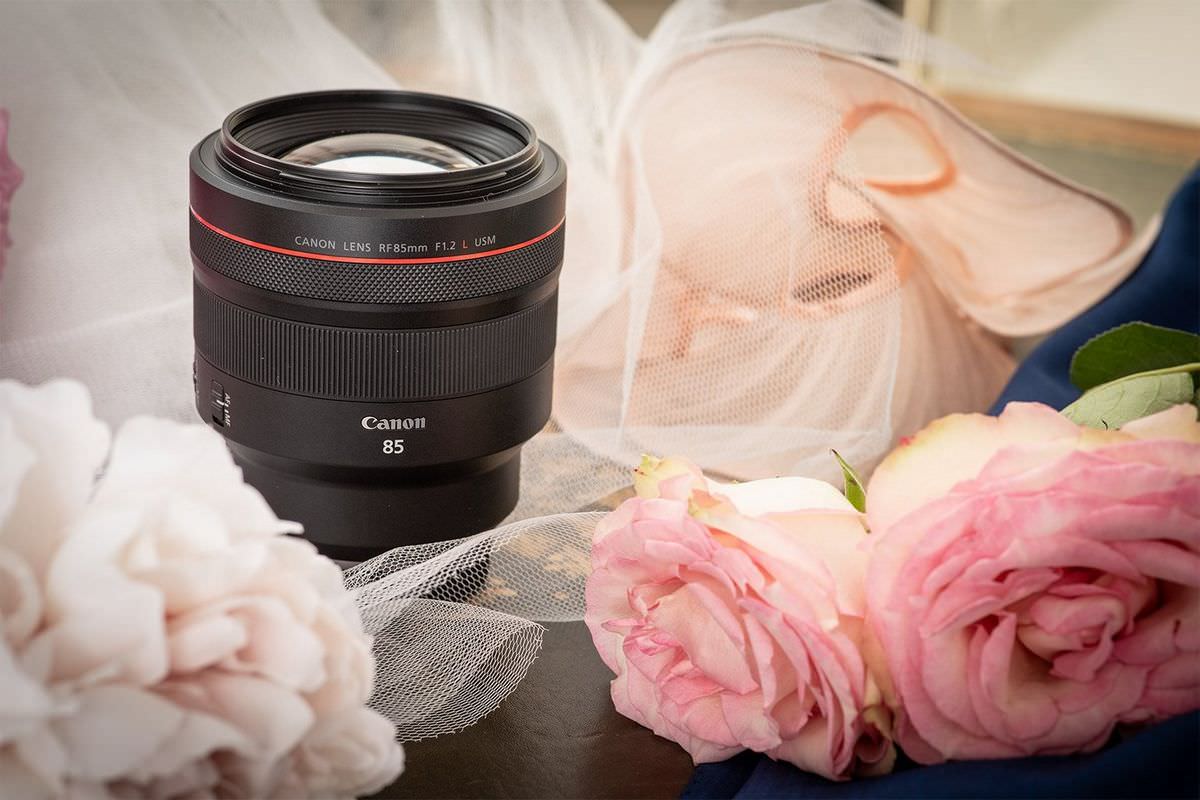
I wanted to share my thoughts here as I know that many of my friends – social photographers who specialise in portraits and weddings – will be eagerly awaiting this new 85mm lens and will be keen to hear what it’s like to use out in the field.
As always with my equipment-based blog posts I want to stress that this is not a technical review. I’m not a very technical photographer and I easily get lost in the physics, so this is a blog post about usability rather than science. I wanted to share my impressions using the lens to photograph babies, children, and families out and about in their homes, gardens, and local parks. As always, my work is about finding beauty in the everyday and working in situations that can be easily recognised by all of us, photographing normal children, not models, in everyday situations.

Why 85mm?
One of the questions I’m most frequently asked is what equipment I use and, for me, one of the most important things is choice of focal length.
I tend to shoot with two camera bodies, usually a combination of Canon 1DX Mark 2 bodies and an EOS R. The exact configuration depends on the situation and my mood and sometimes I’ll even have all three strung around my neck with a prime lens on each.
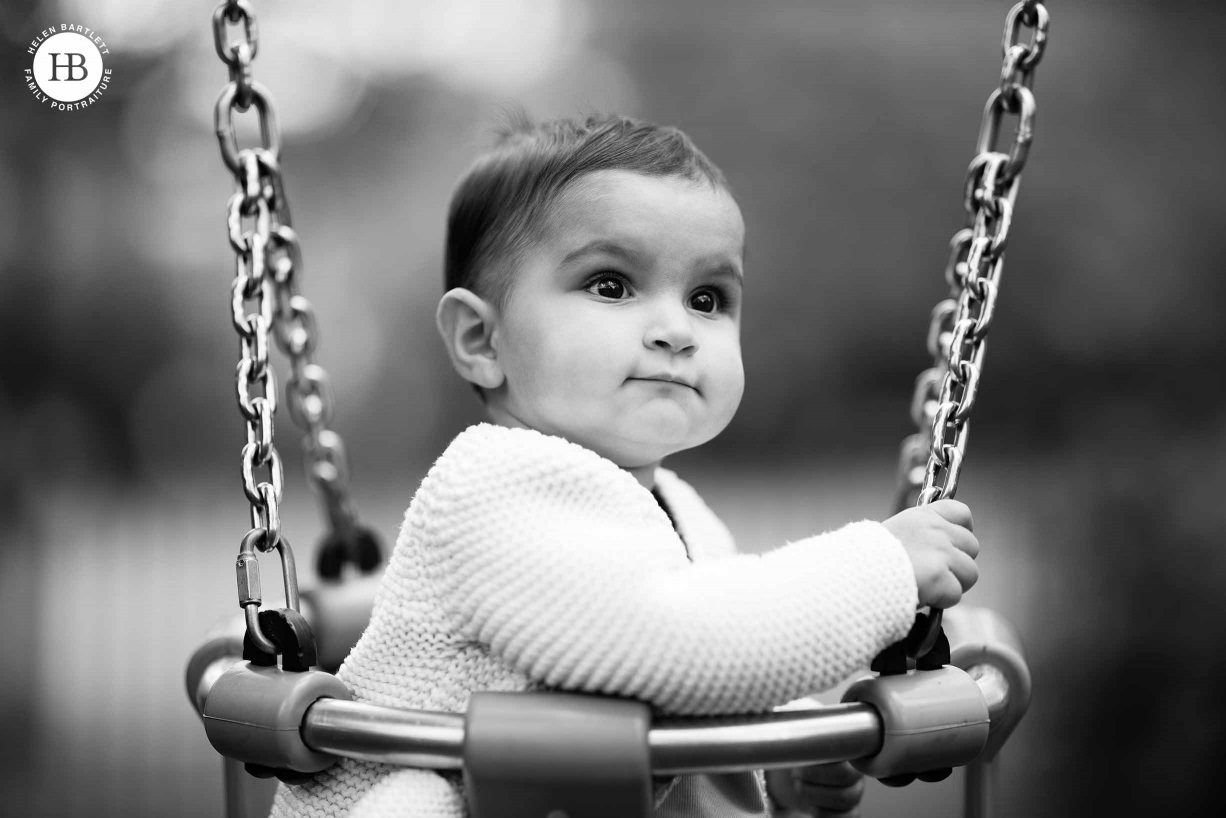
The quality of the RF 85mm f1.2L lens is extraordinary.
I’ve been a prime lens shooter for many years now. Although like many family photographers I started out with a 24-70 and a 70-200 zoom, I soon migrated to fast prime lenses. I find primes more instinctive to use and faster, I find with zooms that I tend to work more slowly. It’s quick to zoom with my feet. Now my go-to focal lengths are 35mm, 50mm and 85mm, with the Canon EF 85mm f1.4L IS and Canon EF 35mm f1.4L II being my most used lenses. If I’m working outside (which I do for a lot of my work) my primary lens is the EF 85 1.4L IS USM which I use on my 1DX Mark 2 camera.
Since I got an EOS R earlier this year, I’ve been looking forward to the launch of a native 85mm lens for the mirrorless system so I can make use of the advantages of features such as the what-you-see-is what-you-get effect of the electronic viewfinder which is brilliant for difficult lighting situations.
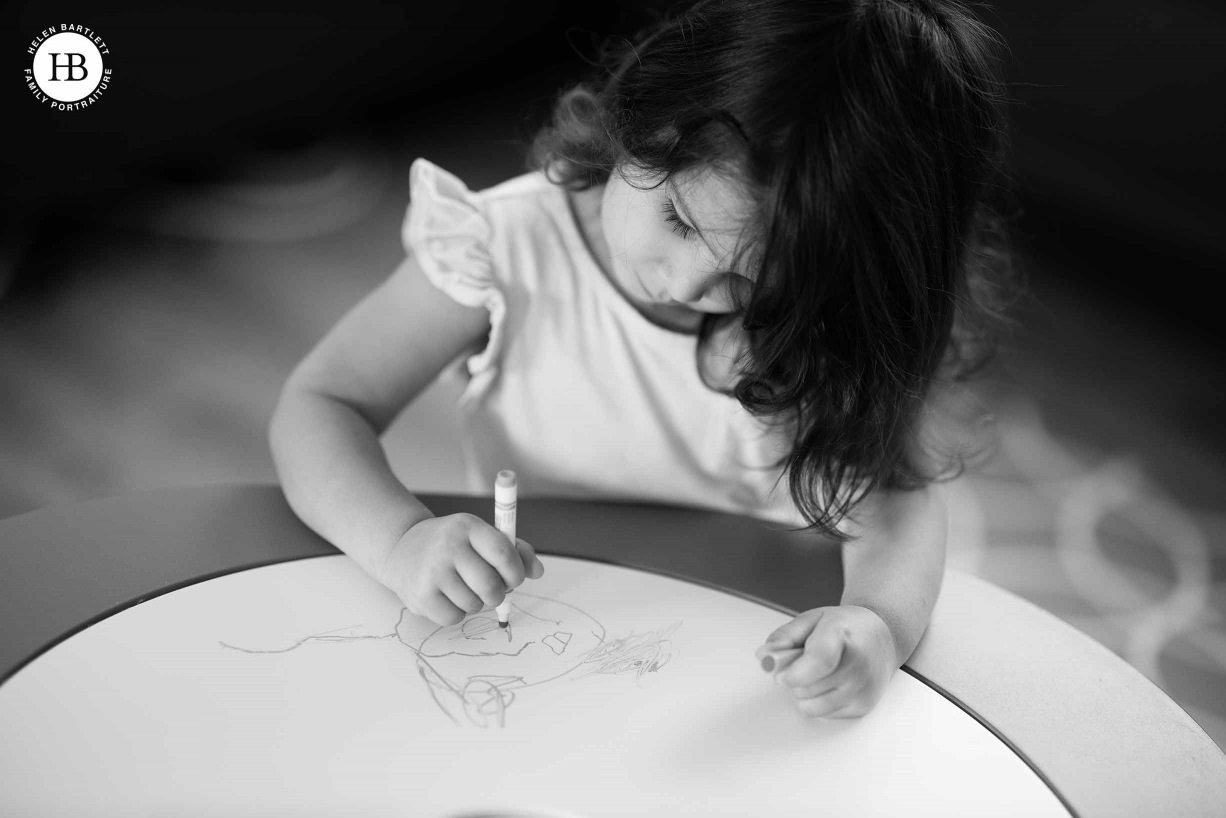
Working indoors the fast f1.2 aperture means low light is not a problem.
85mm is the perfect focal length for family portraits. It’s a beautiful and flattering focal length for portrait pictures but it’s also great for taking full length and group shots. I find it’s great outdoors as I can easily switch from action shots to headshots and the extra length it gives me means I can keep up with fast moving toddlers and children who want to run around. While the 85mm length provides me with a bit of reach, it’s not too long so I’m not far away from the action.
I can be close to the children while I work, chatting to them and playing games without having to shout instructions from six feet away. By playing and chatting and working in this relaxed fashion I’m communicating with my subjects and that’s the wonderful space where the most beautiful portraits are made, a collaboration between photographer and subject to produce something special.
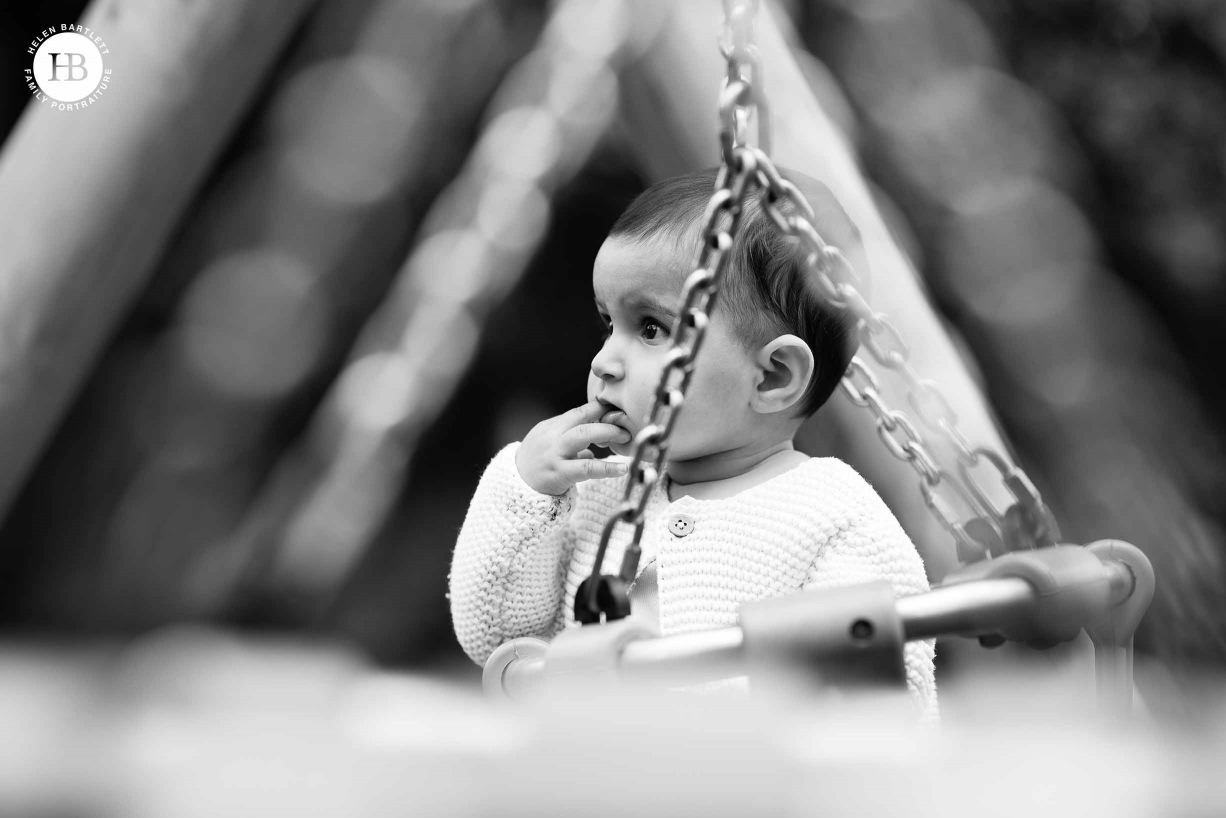
The quality of the bokeh is important for creative images like this one.
The EOS R twelve pin lens mount and the RF 85mm f1.2L
Of course, I already have an 85mm lens so why was I excited by another one? Especially as I can use my EF lenses on my EOS R with the fabulous adaptor which has no loss of quality when using lenses from the other system.
The main reason I was excited was the experience of using the RF 50mm f1.2L which is, without a doubt, the most staggering lens I’ve ever owned and has quickly become a favourite since I bought one earlier this year. It’s unsurpassed in its sharpness, clarity and the beauty of the files. I knew that when Canon announced an 85mm L-series lens I could expect an equally big jump and so had been waiting on tenterhooks for the announcement.
I was amazed that the RF 85mm f1.2L lens was able to track a running child at f1.2.
Photographers talk about bokeh a lot – the way a lens renders out of focus points of light and this is one of those things that the more you look at it the more important it becomes. The better the lens the more pleasing the effect and Canon has always produced lenses with beautiful bokeh. The RF 85mm f1.2L
is no exception and interestingly Canon has also announced a second version of the lens (which I haven’t had the chance to use yet) the RF 85mm f1.2L DS (de-focus smoothing) will have even more beautiful bokeh. I can’t wait to see that when it’s launched. If you are interested in that version of this lens, there’s more information on Canon’s website.
But back to the RF 85mm f1.2 that I’ve been using! The big and exciting difference with the new lenses for the EOS R is the new RF lens mount. I freely admit that I had never given the slightest thought to lens mounts before the EOS R came into my life and I was surprised when I was involved with the launch of the camera last year that the lens mount was such a big talking point. It was the element that my colleagues at Canon focused on above all else.

The 85mm focal length is perfect for portraits.
As photographers we talk about the headline specifications that differentiate one camera model from another. How much does it cost? How big are the files etc?. Hardly anyone pays attention to the internal components, I’ve never heard photographers talk about the dual-pixel autofocus or twelve pin mounts. But maybe that’s because we don’t understand the difference they make. The last big change of lens mount for Canon users was back in the 1987 when Canon introduced the EOS EF (electronic focus) mount. As I have discovered, a change in the mount is a big thing with real world advantages for us photographers.
The new mount has twelve pins connecting the lens to the camera, an increase in 50% from the older EF mount. This increase in the number of data channels means faster data transfer which, to the photographer, means faster autofocus and better image quality optimisation. Now we’re talking my language.
I hadn’t realised that the lens mount significantly affects imagery, now I’m seeing the results first hand with beautifully sharp images and incredibly fast focus. We should all be excited about lens mounts.
Why is an f1.2 aperture so exciting?
The other exciting element to the lens is the fast f1.2 aperture.
Having a very fast aperture has a number of different benefits to me as a portrait photographer. Firstly, the incredibly look it gives to images, beautifully dreamy bokeh and super-sharp detail that gives images a very distinctive look.
I’ve often shoot with my lens’ aperture wide open and have owned a number of f1.2 lenses in my time, but the RF lenses are in a different class. I always loved my EF 85 1.2 L II but I did find that it was a little slow to focus and also could get knocked out of calibration with the battering my equipment takes.
Twice a year, I have the lens calibrated to my cameras at CPS (a routine I would highly recommend to everyone using Canon’s pro-level DSLR cameras). I’d find that when I got my lens back it would be super sharp but then after a number of bumps and crunches I’d feel more confident shooting around f2.
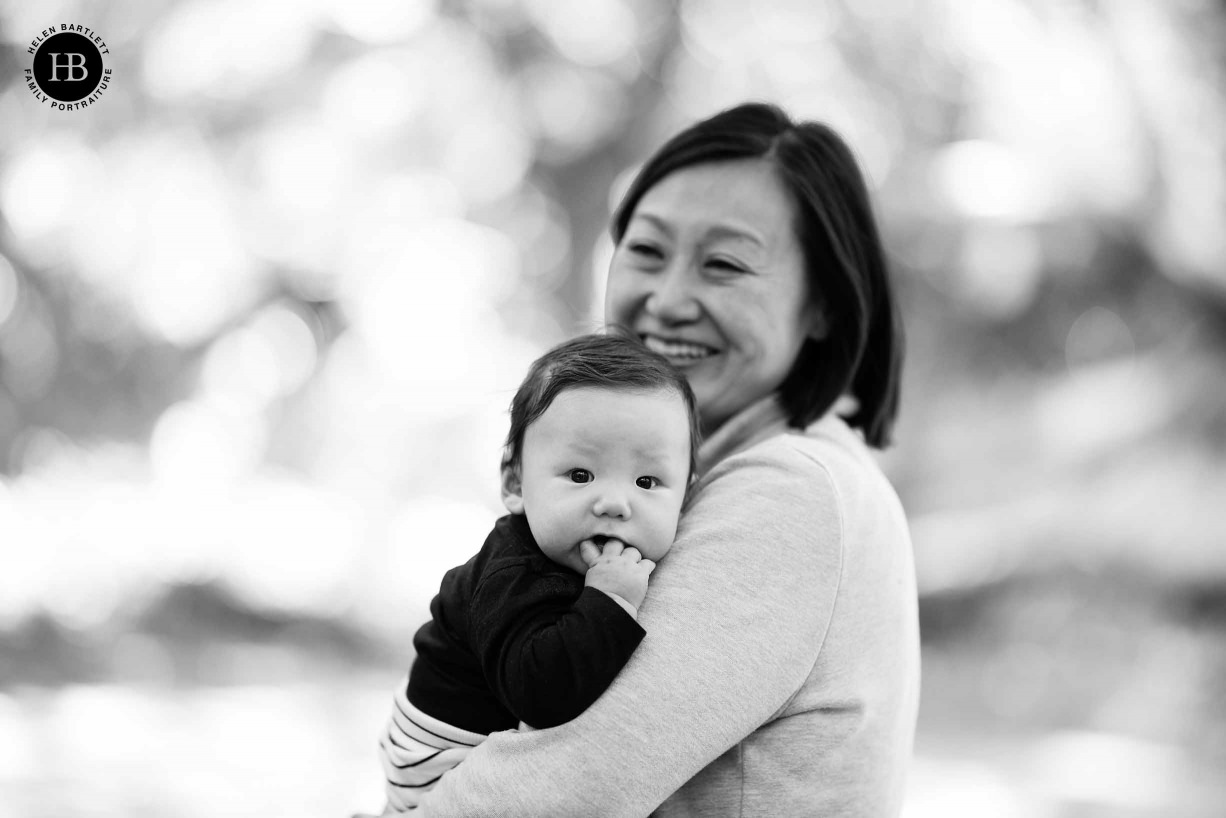
Shallow depth of field isolates our subject from the background giving portraits a beautiful and distinctive look.
To put this in context, with my 85mm on my Canon 1DX Mark 2 at 1 meter from my subject the depth of field at f2 is only 2cm. Closer in, it’s a matter of millimetres; a question of getting the eyelashes or the iris of an eye in focus and where even the movement of breathing can mean the focus is a tiny bit off. It’s a precision sport that is fun for family photographers but also a challenge that can have mixed results with fast-moving toddlers who don’t sit still for a second. As a stickler for sharpness who examines my pictures at 300% on a 29 inch Retina screen to check focus, these things are important.
Having a camera that is pin sharp, consistently, at f1.2 is extraordinary and the RF lenses are consistently sharp.
Wide apertures are also fantastic if we are shooting in low light and, like many family photographers, I often work indoors especially with the inclement weather we’ve been having recently here in the UK. In fairness, the 85mm focal length is a bit long for working indoors, I prefer to use the RF 50mm f1.2 when I’m working in my clients’ homes but the flexibility with the fast lenses remains the same. Allowing more light into the camera we can work to produce beautiful images indoors which is a win-win situation for us and our clients.
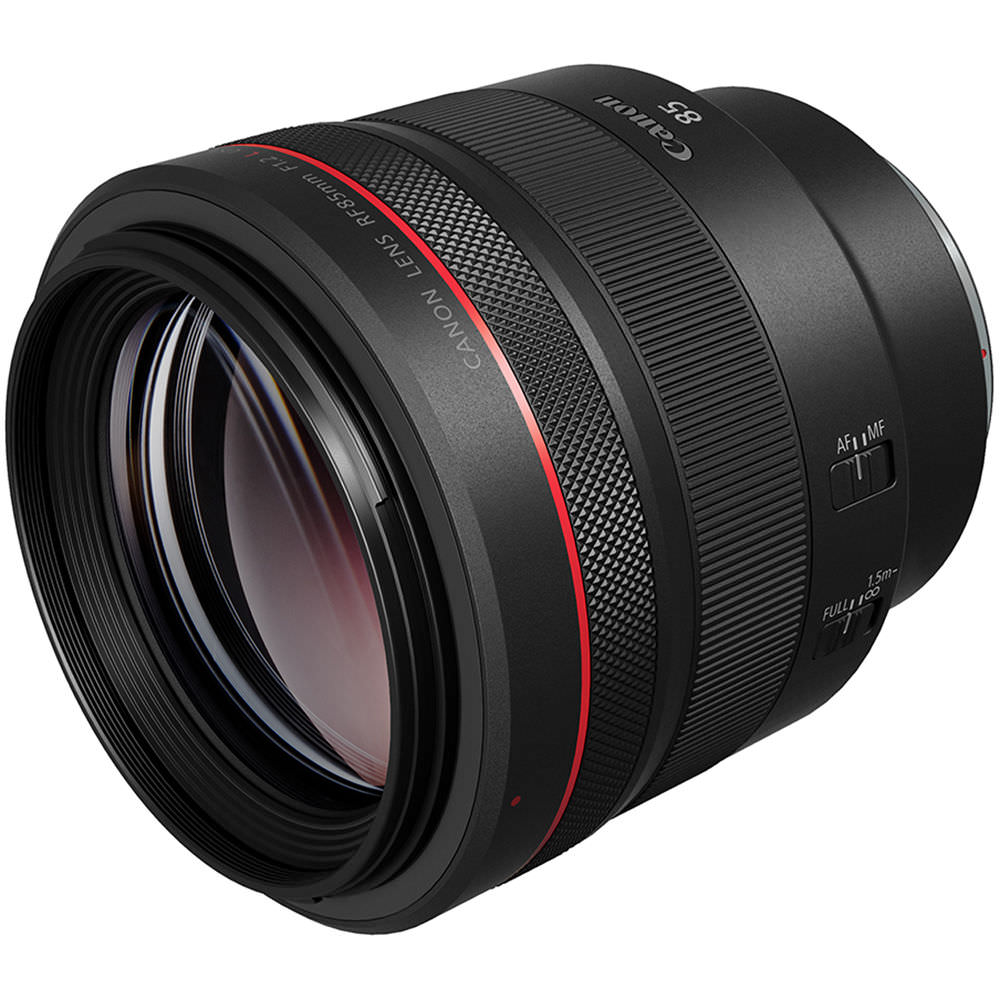
This shallow depth of field can also be a boon when working outside. I’ll often find myself in cluttered environments in parks and playgrounds. Rubbish bins, buggies, and play equipment all provide distractions in the backs of images. However, if I work at wide apertures and with the benefit of black and white, an ugly rubbish bin becomes much less noticeable within a picture.
Previously I’d been nervous working at 1.2 with fast moving children: so much of my work is shot in a documentary fashion and with this depth of field of measured in mm anything else would have been foolhardy. While I’d occasionally use f1.2 for a static portrait I’d usually shoot at around f2.2-f3.5 when out and about. The new RF lenses almost feel like witchcraft, it’s incredible how they can track a running child at f1.2 consistently.
I was amazed to find eight pictures of a running child tack sharp at the widest aperture. The picture itself wasn’t great (I was hiding under a table as part of a game of hide and seek and unable to move fast enough to correct my composition) but the consistency of focus was superb.
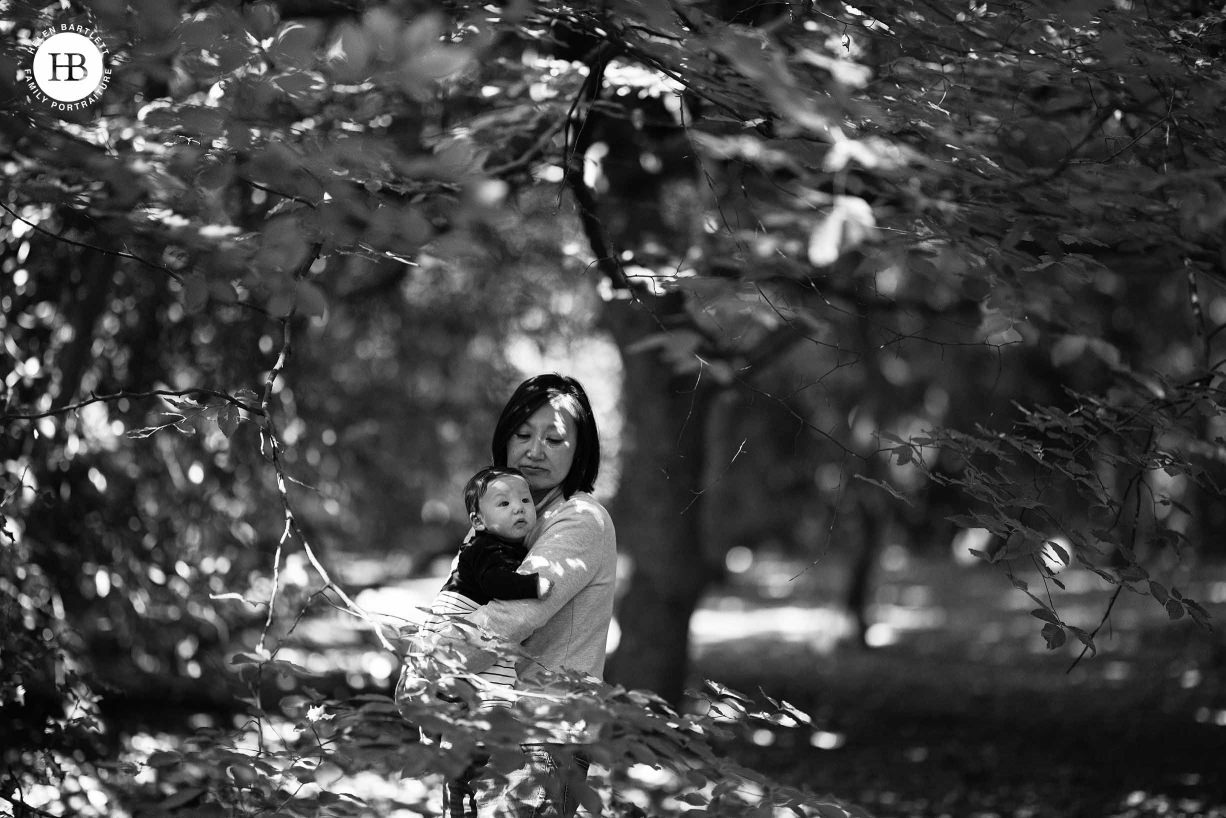
The electronic viewfinder means that working with complex lighting is a joy.
In conclusion – will I be buying an RF 85mm f1.2L lens?
I’m hoping my accountant won’t be reading this but, yes, I think I will be adding an RF 85mm f1.2L lens to my collection. Not yet though as I am still shooting with the 1DX Mark 2 cameras a lot of the time and my EF 85mm f1.4L is still one of my all-time favourite lenses.
But, in the future, I expect I will add this phenomenal lens to my arsenal and I do hope to experiment with the de-focus smoothing version of the lens when that is available later in the year.

Swings pose no problems for the EOS R and the RF 85mm f1.2L USM lens.
Like the new RF 50mm f1.2L, the RF 85mm f1.2L is setting a new standard for optical performance. It’s super-sharp, lightning fast to focus, and produces beautiful bokeh. I’m so privileged to be working with Canon at this time of great innovation in their product range and it’s wonderful to have a chance to try this new equipment and be able to share my thoughts with you.
The future looks bright for us as photographers with these amazing new products and how the improvements in technology are allowing us to create new images that would have been impossible in the past. It’s exciting to see what innovations will happen next and I look forward to the images that will result."

The distracting elements in a park blend into the background on images shot at f1.2.





